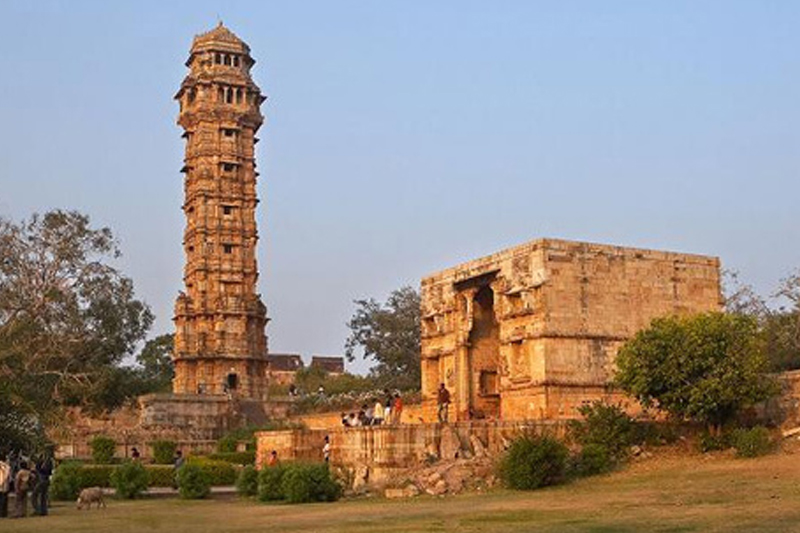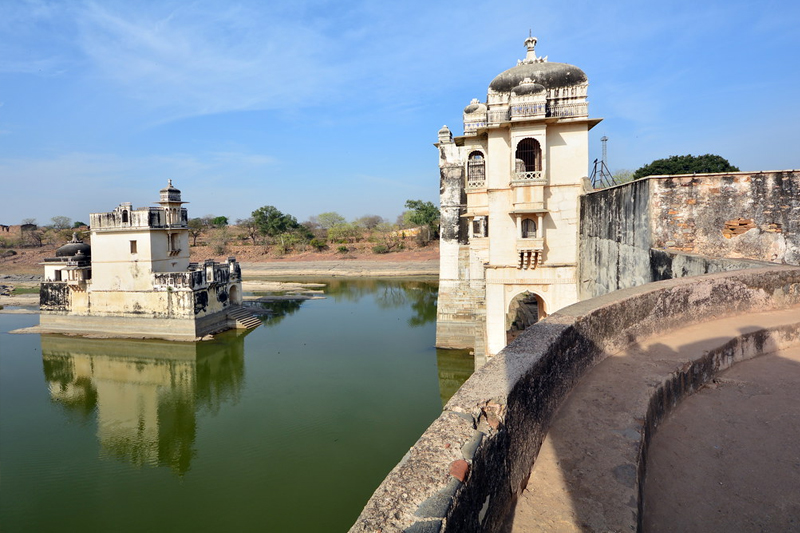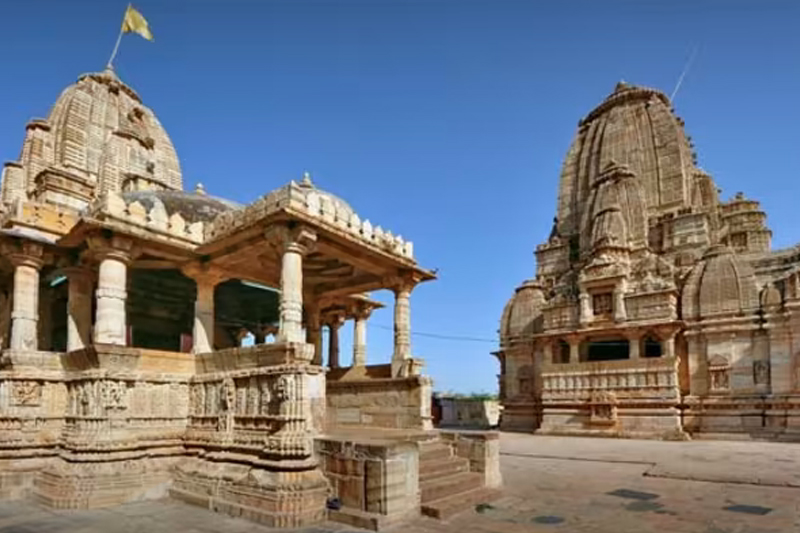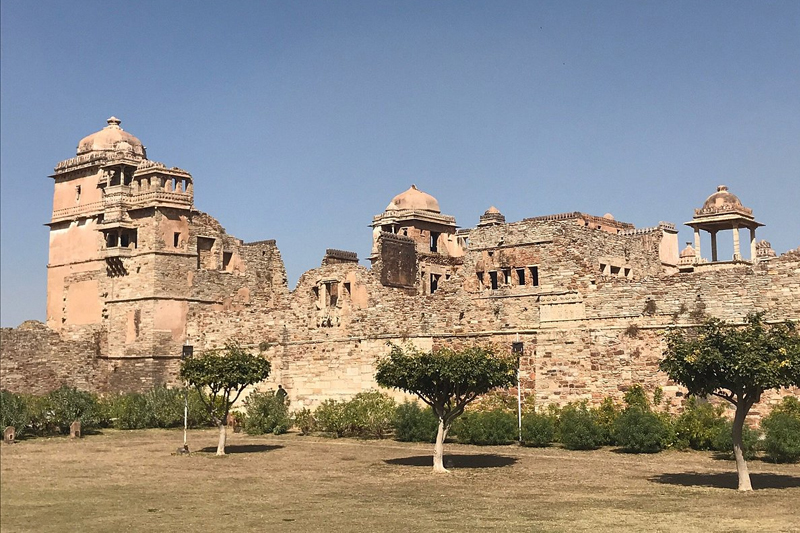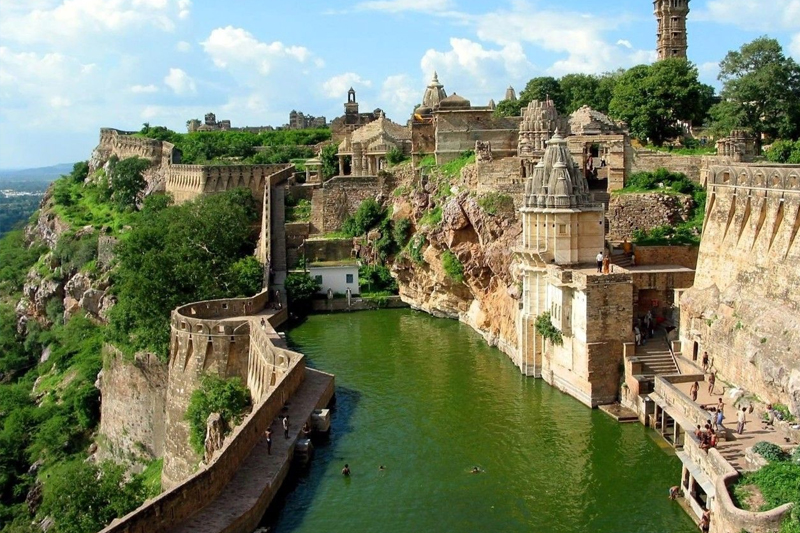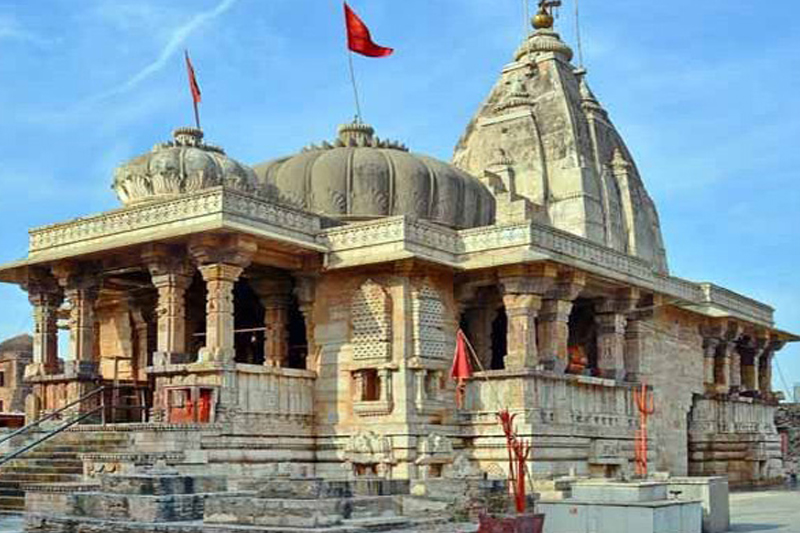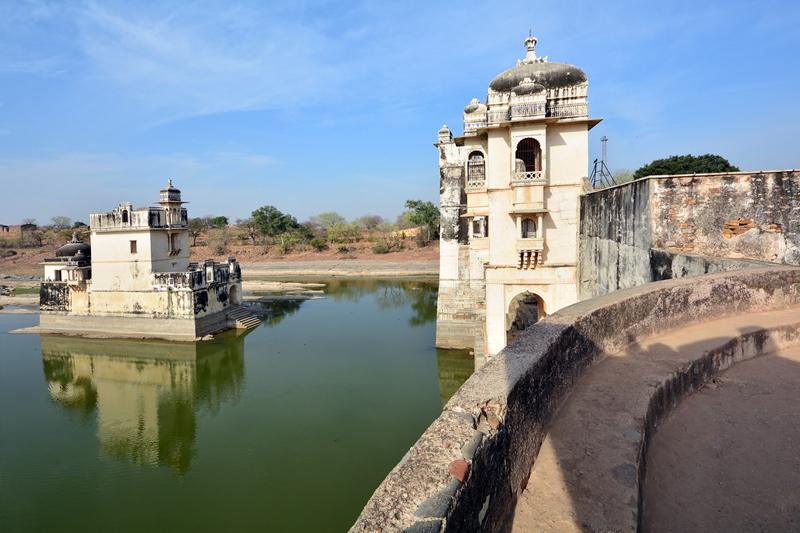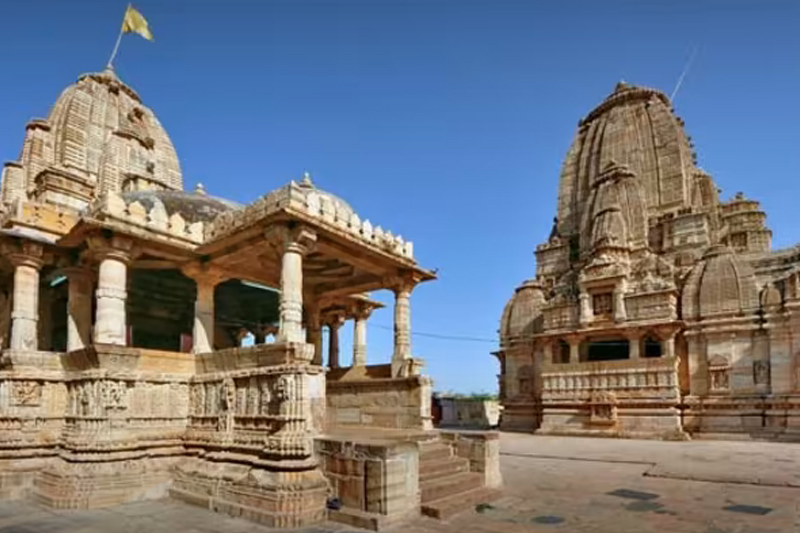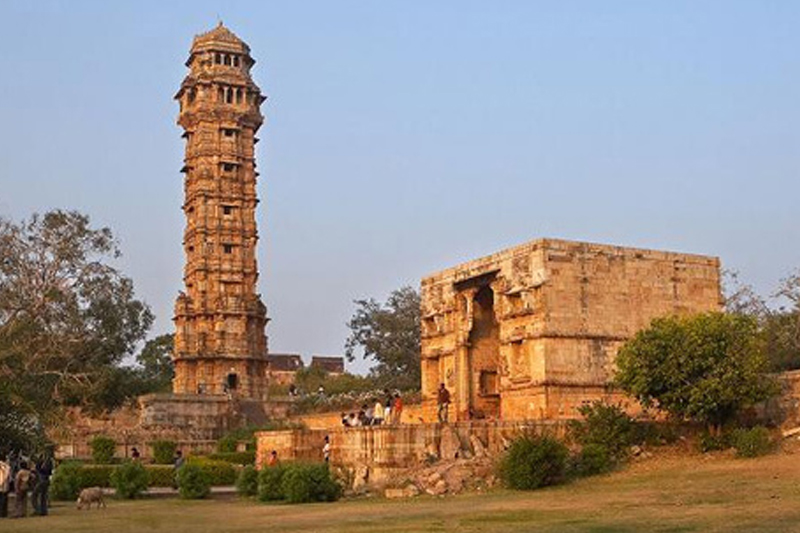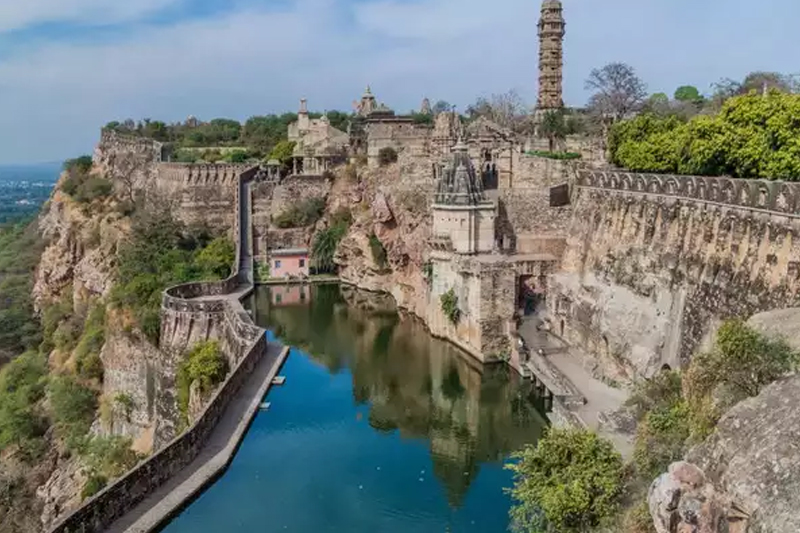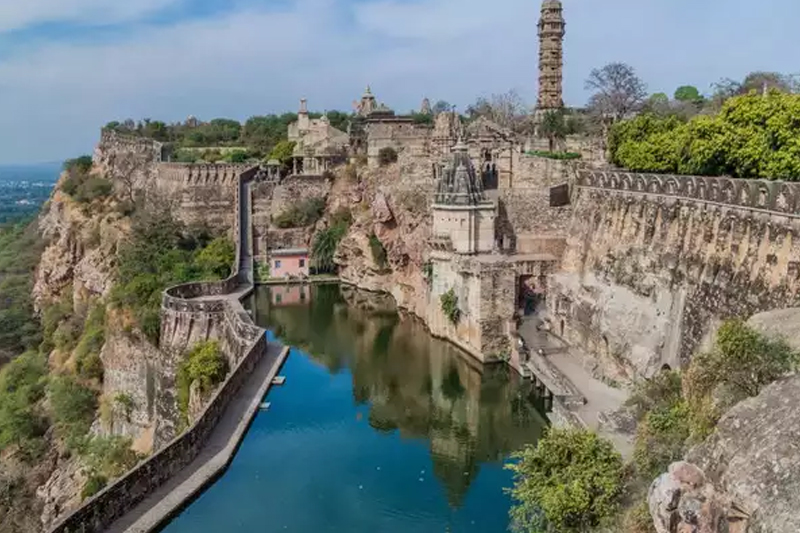
Chittorgarh Fort, a UNESCO World Heritage site, is one of the largest forts in India in terms of area. Built by the Mauryas, it stands as a symbol of Rajput courage and their tradition of Jauhar. The fort, standing 180 meters above sea level, includes many palaces, temples, towers, and tanks. Significant structures within the fort include the Vijay Stambh (Victory Tower), Kirti Stambh (Tower of Fame), Rana Kumbha Palace, and Padmini's Palace. The fort walls provide a magnificent view of the surrounding scenery.


